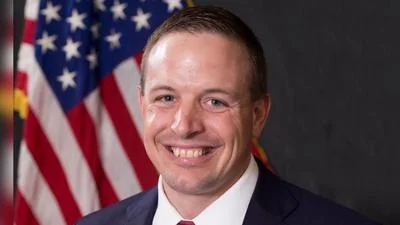Froedtert West Bend Hospital issued the following announcement on November 16.
Chronic atrial fibrillation has put Cynthia at risk of a stroke for most of her life. When other devices to reduce that risk didn't work, she and her care team found success with the AtriClip device.
Cynthia Busche, 66, of Wauwatosa, has lived with atrial fibrillation (AFib) since she was 18 years old. AFib is a heart condition that causes the upper chambers of the heart to beat irregularly and out of sync with the lower chambers of the heart. Cynthia’s AFib is chronic — she doesn’t experience heart palpitations or shortness of breath — but the potential of having a stroke caused by her AFib was a major concern for most of her life, until she had an AtriClip® procedure at Froedtert Hospital.
What is AtriClip?
AtriClip is a device used to close off the heart’s left atrial appendage (LAA), a sac in the upper chambers of the heart where blood tends to pool in people who have an irregular heartbeat. The clip functions similarly to a bobby pin and is placed by a cardiothoracic surgeon at the base of the appendage.
“About 90% of strokes in people with AFib are caused by a clot in the left atrial appendage,” said Mario Gasparri, MD, Froedtert & MCW cardiothoracic surgeon. “The left atrial appendage does not serve a function, so if we can exclude it from circulation by closing it off, we can decrease stroke risk.”
Left Atrial Appendage Closure Procedures
There are two types of LAA closure procedures: the WATCHMAN™ procedure and the AtriClip procedure. The WATCHMAN is an umbrella-like device that is implanted with a catheter inside the left atrial appendage and expands inside it to seal it off. The AtriClip is placed from the outside of the heart around the appendage. The anatomy of each individual’s left atrial appendage dictates which closure procedure will have the best outcome.
“Both devices are equally effective in preventing strokes,” Dr. Gasparri said. “But about 10% of patients aren’t good candidates for the WATCHMAN because of the size and shape of their left atrial appendage, in which case we recommend the AtriClip.”
Cynthia always thought she had no option other than to live her life at a high risk for stroke because of her AFib and inability to take blood thinners. A malformed blood vessel at her brain stem means she has a high risk of bleeding, so blood thinners to prevent a clot are not an option.
When her cardiologist at Froedtert Hospital, Scott Cohen, MD, suggested a left atrial appendage closure procedure to reduce her risk, she was excited. Dr. Cohen referred Cynthia to Marcie Berger, MD, a Froedtert & MCW electrophysiologist, for a WATCHMAN implant. This procedure is recommended before the AtriClip because it is less invasive and patients have an easier recovery.
Dr. Berger tried two different versions of the WATCHMAN, but Cynthia’s anatomy made it impossible to place the device and fully close the appendage. The next step was to try the AtriClip, which the team was confident would work because the clip does not depend on the size or shape of a person’s appendage.
“Throughout the course of my life with AFib, I had been told by so many doctors that I was one of those patients between a rock and a hard place — do you choose to bleed or do you choose to have a stroke?” Cynthia said. “After we tried to implant a WATCHMAN twice and it didn’t work for me, I was feeling a bit hopeless, but Dr. Gasparri’s confidence in the success of the AtriClip made me feel comfortable.”
The AtriClip Procedure
The AtriClip procedure is done under general anesthesia and is minimally invasive. It requires three small incisions on the left side of the chest. Placement of the clip is traditionally done with the help of a thoroscope, a thin flexible tube that is inserted into the chest with a camera to visualize the lungs, the area outside of the heart and the left atrial appendage. The procedure requires the operator to have a high level of skill and precision because the appendage is located very close to the major structures of the heart and the appendage itself is very fragile. In order to have better visualization during the procedure and greater dexterity with the instruments, Froedtert & MCW cardiothoracic surgeons take a unique approach and do the AtriClip procedure using the da Vinci® Robotic Surgical System.
“The robot offers 12 times the magnification compared to three times the magnification with a thoroscope,” Dr. Gasparri said. “The arms of the robot also have much better articulation, which is a big leap from an instrumentation standpoint and allows the operator to be more precise.”
Two Froedtert & MCW cardiothoracic surgeons perform the procedure together. One is an expert at operating the robot, while the other specializes in placing the clip around the appendage.
“This is where our program is so specialized,” said David Joyce, MD, Froedtert & MCW cardiothoracic surgeon. “The reliability and success we have seen with this combination of thoracic and cardiac experience, skill and technology allows us to offer this therapy to even the highest risk patients.”
Cynthia’s AtriClip procedure was at Froedtert Hospital on March 31, 2021, with Dr. Gasparri and Dr. Joyce. She stayed overnight in the hospital, then spent the next six weeks recovering at home. She got the all clear at her 45-day follow up appointment. She’s back to gardening and caring for her grandchildren and doesn’t worry about a having a stroke.
“My doctors were confident that the clip would be a success, and I’m so glad it was an option,” Cynthia said. “I still have chronic AFib, but a major cause for concern — a potential stroke caused by a clot in my appendage — is gone now. It is a relief.”
Original source can be found here.



 Alerts Sign-up
Alerts Sign-up